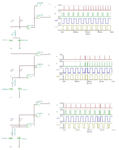sun_ray
Advanced Member level 3
We have two different clock generators. The frequency of one clock from one generator is very slightly higher than the clock from the other generator. Can you please provide a design that will be able to state which clock has a higher frequency?
Regards
Regards
